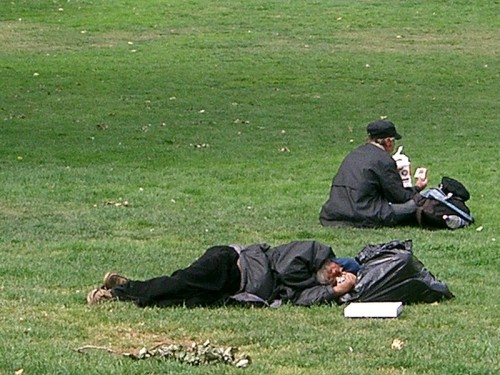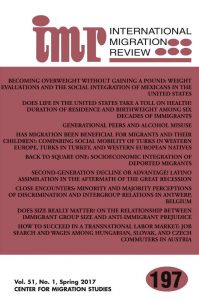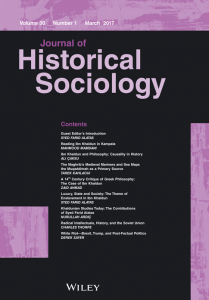Removing the homeless from the streets
The New York City Rescue Mission recently posted a video on their website of a social experiment examining whether or not a person would recognize his/her own family member dressed to appear homeless. To no surprise, the test subjects did not recognize their family member as they walked past them on the street. Watching the powerful video not only puts homelessness into perspective for those individuals who did not recognize their own family, but also raises questions for all of us as to whether we pay attention to the homeless. In the United States the homeless are often associated with negative connotations. Our constructed realities of the homeless consist of dirty, lazy individuals who are likely drunk, on drugs, and/or mentally ill who commits crime to survive. These negative meanings attached to have serious consequences for how we should respond to the homeless, typically guiding punitive policies that interweave narratives of homeless persons and public health issues (Amster, 2003). The associated negative connotations with the homeless provide the public with a basis to remove the homeless from public space in the name of safety.
The perception that homeless people commit crime and cause disorder in public spaces is one of the central reasons as to why citizens, businesses, and government officials oppose the placement of homeless facilities in downtown areas and advocate for the spatial restrictions of homeless populations (Barak, 1991). With anti-homeless ordinances rapidly proliferating, their proponents and apologists redouble their efforts to construct justifications for laws restricting conduct in public places. Standard justifications have included public health and safety, economics, and aesthetics (Foscarinis & Herz, 1995).
Cities are using their authority to maintain a culture that embodies order and lawfulness, and control who may or may not use public space. Several cities are deciding to use their authority to manipulate standards of decency in cities to emphasize aesthetics over the well-being of their homeless population (Amster 2003). For instance, the laws against dumpster diving, panhandling, and sleeping on the sidewalks were created to help residents and visitors feel safer and to maintain a clean image of downtown. Ferrell (2001b: 164) notes that the daily lives of the homeless “are all but outlawed through a plethora of new statues and enforcement strategies regarding sitting, sleeping, begging, loitering, and urban camping.” While, Neil Smith (1996: 225) observes that “the criminalization of more and more aspects of the everyday life of homeless people is increasingly pervasive.” The results of these laws lead to an entire category of people being made criminal for everyday activities. Despite frequent assertions that only conduct is being targeted and not status, it is clear from the policies and surrounding narratives that certain conduct attaches to specific groups, and that proscribing the conduct is equivalent to criminalizing the category (Amster 2003).
Similar to Kawash’s (1998) finding, the homeless are repeatedly subjected to processes of containment, constriction and compression that seek not simply to exclude or control the homeless but to efface their presence altogether. These processes become effective claims which are added to the community’s stock of knowledge (Berger & Luckmann 1966) and treated as objective and taken-for-granted social facts. The effective claims become central to community prioritization schemes and influence decision making about the roots and solutions to the homelessness problem. Like people everywhere, the homeless must eat, sleep, eliminate, make ends meet, socialize, and secure a measure of meaning and self-respect (Snow et al. 1986). The constructions of homeless identities deny these basic needs and the homeless are confronted with a seemingly self-evident trend toward restricting, regulating, and removing them from public view.
Homeless populations are increasingly being excluded from all places governed by private (and public) property, while simultaneously having their voice left out of public discussion in the causes, solutions, and lived-experience of being homeless. The spatial cleansing of public areas confronts homeless populations with spatial restrictions centered on business interests and laws. In regards to the invisibility of homelessness these policies seek to push the invisible (in the sense the homeless are ignored on the streets) to the margins making them objectively invisible from cities. These policies have detrimental psychological and physical effects on homeless populations and issues organizations like New York City Rescue Mission are left to battle.
References
Amster, R. (2003). Patterns of Exclusion: Sanitizing Space, Criminalizing Homelessness. Social Justice 30: 195-221.
Barak, G. (1991). Gimme Shelter: A Social History of Homelessness in Contemporary America. New York: Praeger.
Ferrell, J. (2001). Tearing Down the Streets. New York: Palgrave.
Kawash, S. (1998). The Homeless Body. Public Culture 10: 319-339.
Smith, N. (1996). The New Urban Frontier: Gentrification and the Revanchist City. New York: Routledge.
Snow, D.A. & Mulcahy, M. (2001). Space, Politics, and the Survival Strategies of the Homeless. American Behavioral Scientist 45: 149-169.







1 Response
[…] Read the rest. […]